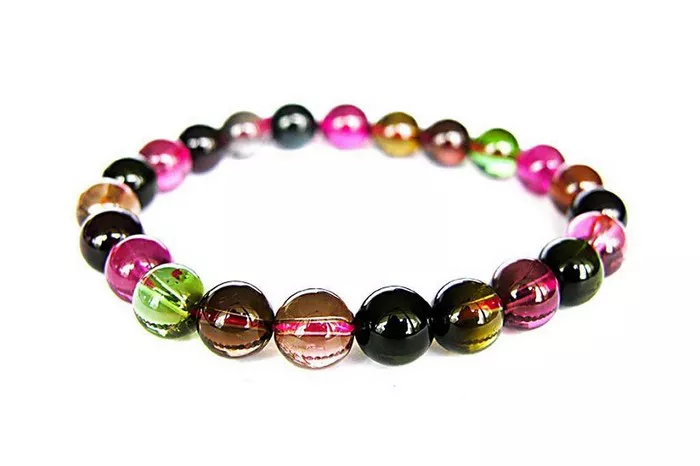Green tourmaline and emerald are both gemstones that are highly valued for their green color. However, they have distinct characteristics that set them apart in appearance. While at first glance, they may seem similar due to their shared color palette, a closer examination reveals many differences in their physical properties, which in turn affect how they look.
Color
General Hue
Both green tourmaline and emerald are green, but the range of green hues can vary. Emerald is typically known for its deep, rich green color. It often has a bluish – green tint, which is considered a classic and highly desirable color for emeralds. For example, the famous Colombian emeralds are renowned for their intense, slightly bluish – green color.
Green tourmaline, on the other hand, can have a wider range of green shades. It can be a lighter, more yellow – green or a darker, almost forest – green. Some green tourmalines may even have a hint of brownish – green, which is not characteristic of emeralds. So, while there can be an overlap in the green color spectrum, the specific hues can often be used to distinguish between the two.
Color Uniformity
Emeralds are more likely to have color zoning. This means that the color may not be evenly distributed throughout the stone. There can be areas of darker and lighter green within the same emerald. For example, when looking at an emerald under magnification, one might see a core of deeper green surrounded by a lighter green periphery.
Green tourmaline, in contrast, generally has a more uniform color distribution. It is less likely to have such obvious color zoning, and the overall color appears more consistent across the gemstone.
Transparency and Clarity
Transparency
Emeralds are often less transparent compared to green tourmaline. Emeralds typically have a certain degree of opacity or a “velvety” appearance. This is due to the presence of inclusions, which are very common in emeralds. These inclusions can give the stone a hazy look, but they are also part of what makes emeralds unique. For example, the inclusions in emeralds are sometimes referred to as “jardin” (French for garden), as they can resemble a garden of small particles within the stone.
Green tourmaline is usually more transparent. It allows light to pass through more clearly, giving it a brighter and more glassy appearance. This difference in transparency can be quite noticeable when comparing the two gemstones side by side.
Clarity
As mentioned, emeralds are notorious for having inclusions. In fact, finding a completely inclusion – free emerald is extremely rare. These inclusions can range from small fractures to mineral inclusions.
Green tourmaline, while it can also have inclusions, is more likely to be found with fewer and less noticeable inclusions. Higher – quality green tourmalines can be relatively clean, which contributes to their different visual appearance compared to emeralds.
Luster
Emerald has a somewhat different luster compared to green tourmaline. It has a more subdued luster due to its inclusions and the way it absorbs and reflects light. The inclusions in emeralds scatter light, reducing the overall shine. It is often described as having a “greasy” or “waxy” luster. This is not to say that emeralds are not beautiful; rather, it is a characteristic luster that is unique to emeralds.
Green tourmaline, with its greater transparency and fewer inclusions, has a more vitreous (glass – like) luster. It reflects light more evenly and brightly, giving it a shiny appearance similar to glass. This difference in luster can be a key factor in differentiating the two gemstones visually.
Cut and Faceting
Emeralds are often cut in a specific way known as the emerald cut. This cut is designed to enhance the color of the emerald while minimizing the visibility of inclusions. The emerald cut has a rectangular or square shape with cut corners and large, flat facets. This cut gives emeralds a more elegant and stately appearance, but it also reflects light in a particular way that is characteristic of emeralds.
Green tourmaline can be cut in a variety of ways, including the emerald cut, but it is also commonly cut in other shapes such as oval, round, or pear – shaped. Different cuts can bring out different aspects of the green tourmaline’s beauty, such as its transparency and luster. For example, a round – cut green tourmaline will sparkle more than an emerald – cut one, due to the different ways the light is refracted.
Conclusion
In conclusion, while green tourmaline and emerald may share a common color, they have many differences in their appearance. From the color hue and uniformity, to transparency, clarity, luster, and the way they are cut, these factors all contribute to making each gemstone unique. A trained eye can usually distinguish between green tourmaline and emerald based on these characteristics. However, for the untrained observer, it may take a closer look and some knowledge of gemstone properties to tell the difference. Whether it is for the purpose of identification, appreciation, or purchase, understanding these differences is crucial in the world of jewelry.
Related topic:
- Can You Wash Green Tourmaline?
- The Hardness of Green Tourmaline: A Gemologist’s Guide
- The Price of Green Tourmaline in Zambia: A Comprehensive Guide


